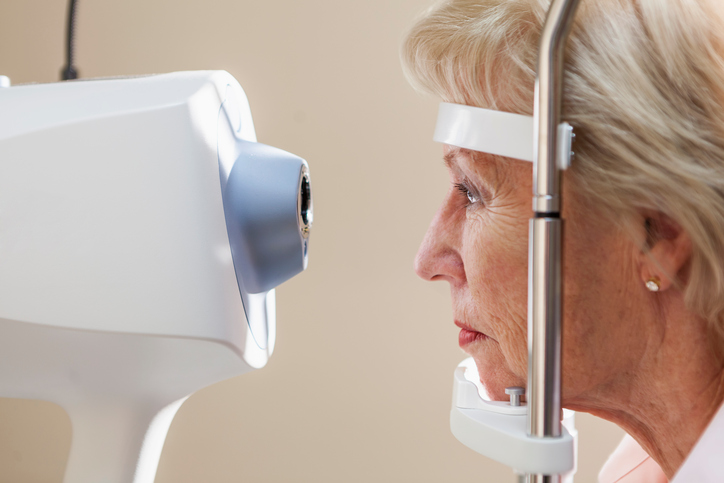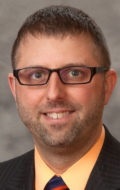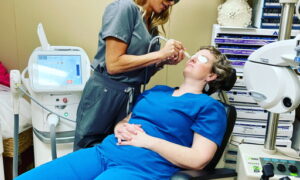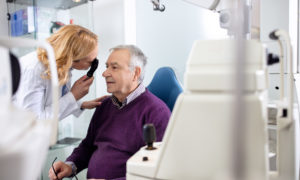By Dave Anderson, OD

July 12, 2017
Glaucoma affects an increasing number of patients due to our aging population, as well as the growth of sub-populations of patients more susceptible to the disease, such as African-Americans and Asian-Americans.
Those with diabetes, another growing disease in the U.S., also often have glaucoma. The National Eye Institute projects that by 2030, 4 million Americans will have glaucoma, and by 2050, 6 million will.
Clearly, this points to opportunities for optometrists to meet patient needs–if you grow a glaucoma treatment specialty with an effective plan.
Currently, my four-OD, 18-support staff practice has over 400 patients who are diagnosed with glaucoma, and another 800 who are suspects with various degrees of risk. Of these, over 25 percent also have diabetes.
The time needed to manage glaucoma patients has been minimal for my office, with my staff handling the majority of required testing, so that I can spend my time in the exam room educating the patient, and interpreting the results of their tests.
Carefully Screen Diabetic Patients for Glaucoma
Patients who have diabetes have a more challenged vascular system. Those who have diabetes often have other challenges to their body such as hypertension, hypercholesterolemia and sleep apnea. While there is no direct link, a compromised vascular system increases the risk of many other diseases, including glaucoma.
All of my patients are evaluated for their risk for glaucoma, including a screening visual field, intraocular pressure testing and nerve evaluation. Those who are diabetic are dilated at every visit, which allows for better evaluation of their optic nerve and a better rate of diagnosis.
Some of Your Patients Are Higher Risk
There are certain groups that have higher risk, and are therefore, watched more closely. African-Americans have a higher risk for open-angle glaucoma, Asian-Americans have a higher risk for narrow-angle glaucoma, and increasing age also increases one’s risk for developing glaucoma.
Additionally, those with a more far-sighted prescription have an increased risk for narrow-angle glaucoma. However, since anyone could potentially develop glaucoma, and since the condition has no symptoms until it is severely advanced, I screen every patient with the assumption that they have glaucoma until the exam proves otherwise.
Choose Level of Screening Based on Risk & Educate
Every visit in my office includes the measurement of the patient’s intra-ocular pressure, and using a non-contact tonometer, or Goldman tonometry, is the first measurement taken on all patients. All patients above the age of 18 are screened us by Zeiss FDT screening visual field. And all patients have a careful funduscopic exam, in addition to an Optomap image to compare over time looking closely for changes.
Patients are always told what we look for, and what we find during each exam, and this helps reinforce the value of annual exams and screening for serious disease such as glaucoma. The cost of this education is minimal, and is usually less than $100 a year to produce brochures that are given to patients related to a specific condition when their risk is on the higher end.
Stay Up-to-Date on Education
Every year each doctor is required to have 25 hours of continuing education in Ohio, where my practice is based, to maintain their license. Our office requires that some of that education be about the basics of diagnosing diseases like macular degeneration, glaucoma and diabetes. This allows each doctor to be at the top of the curve in finding the problem and making the appropriate change in care for an increase in risk.
Market Glaucoma Services
There are several ways that we consistently market our care for chronic diseases like glaucoma. First, we send a letter to doctors outside our practice, whom we are co-managing with, for each encounter to update them on the care of the patient’s condition. We always let the patients’ primary care doctor know when the patient is undergoing additional testing for any disease, and let them know the results.
The other aspect of the marketing is that we always tell patients that we are looking to not only help them see their best today, but also into the future, and this includes helping them prevent damage to their eyes from macular degeneration, glaucoma and other eye diseases that may cause blindness. We also have brochures and video demonstrations in the reception area and exam room to provide basic information to patients while they are in our office.
There is little cost to these marketing efforts; only the cost of time, and a systematic staff effort to ensure that the message is delivered consistently.
Evolve Care
Over the past few years, one of the bigger challenges in the care of glaucoma patients is related to the increased cost and the younger age that I am finding the disease. Specifically, I worry about a patient using drops for 40-50 years of their lives, and I look at a younger patient differently than an older patient with glaucoma.
I have offered SLT as a first line of defense for the treatment of glaucoma, in hopes that it may delay the need for eye drops, and may also increase compliance in the early stage of the disease. I work closely with an ocular surgeon who is willing to perform SLT on patients that have early glaucoma, or moderately low risk of blindness, as either an adjunct, or first-line, treatment.
These patients are visiting on at least a biannual basis, and often quarterly or more. The payments for the visits are nearly always billed to the patient’s medical insurance, and usually covered.
 Dave Anderson, OD, is a partner with Miamisburg Vision Care in Miamisburg, Ohio. To contact: doca@burgvision.com
Dave Anderson, OD, is a partner with Miamisburg Vision Care in Miamisburg, Ohio. To contact: doca@burgvision.com



























